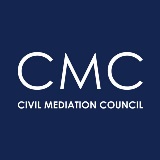*/

As the Bar builds back, Douglas McPherson explains how barristers can benefit from investing their time to produce unique and valuable content
‘Content is king’ is a phrase I’m sure you’ve heard many times.
It has been a marketing (or, more specifically, content marketing) mainstay for years but over the last few months it has taken on far greater resonance at the Bar. The reason for this is twofold.
Firstly, your website is now your most important business development tool after your CV and your clerking room. Populated correctly, it will generate new clients, educate your clientbase, showcase your latest legal thinking and give clients reasons to keep coming back and keep in touch with you. It also allows you to position yourself ahead of your competitors in the areas in which you are strongest.
However, without unique, valuable, and relevant new content, none of this can happen.
Secondly, while we are working remotely and unable to see or interact with people in the way we used to, the internet has become our first port of call when we’re looking for an answer or advice.
This means that every chambers has to think seriously about how they can get to the top of the relevant search results. Unsurprisingly without unique, valuable, and relevant new content, that isn’t going to happen.
While the digital benefits of new content are many, I don’t want to get into the marketing geekery of SEO rankings, traffic rates, backlinks and domain strength. Let’s take that as read and leave it to the marketers! Instead, I’d like to look at how you will benefit personally from investing your time to produce new content.
When I’m beginning a content project with a barristers’ chambers the first question I am almost always is asked is ‘what do I write about?’ The easy answer is you need to write about what is happening in your practice area, but I appreciate that this brief is often too broad especially with so much going on in your practice area at any given time. To try and add a little more focus the following suggestions often prove helpful:
Once you have decided what you’d like to write about the next choice is how and where you publish it. For simplicity I break the options into two:
1. Internal: Articles, case studies, case commentary, legal updates, and blog posts (punchier opinion-led and more informal/conversational pieces) for publication on your website and for promotion via your social media channels.
2. External: Publishing articles for or being interviewed by the publications your lay clients and instructing solicitors read.
Although the overall objective is the same for both (to boost your profile and stay visible), they do work in slightly different ways.
Internal content provides the perfect way to keep in touch with your existing audience. You can promote the links via your social media channels to alert your followers to the new pieces you’ve written. You can also email certain links directly to your relevant clients and contacts to give you an excuse to reconnect with them.
More importantly the pieces you publish online allow you to reach an audience searching specifically for the ideas, insight and advice you are writing about. Your internally published pieces will allow you to combine your name, your chambers’ name and the keywords linked to your practice and push them through the search engine algorithms together.
If you get your topics and titles right, this will build your readership in the right areas and, over time, lead to people getting in touch to find out more. It will also make you more visible to the organisations looking for speakers, interviewees, panellists, and authors on the subjects you’re writing about which will organically produce brand new business development opportunities.
It also takes us neatly to external content.
Your internal content is a vital cog in your personal marketing machine. It will promote you online and give you anchors you can use to direct potential clients towards you. However, external publishing opportunities will help you reach a brand new and much larger audience who may not know they need you and, therefore, won’t have been searching for you.
When it comes to finding the right vehicles to approach for external editorial opportunities, the start point is to think about the titles you know your clients read.
With regards to your instructing solicitors, they are most likely to read the relevant legal press as opposed to more general titles like The Law Society Gazette or The Solicitors Journal. For example, for family solicitors it may be Family Law Week or for private client solicitors it may be Today’s Wills and Probate. Having worked with many chambers I can confidently say there are titles for every practice area. Better still, they can be identified with nothing more arduous than a quick Google search.
Similarly, there will also be a range of titles for your lay clients if you feel that influencing them would be more beneficial. If you specialise in construction, you may want to consider approaching Construction Magazine or Construction News. If you specialise in pension law, Pensions Age or Professional Pensions may be best.
Regardless of whether you take the legal route or the sector route, when you identify the right publication and find the editor’s name and email address, your pitch is simple. Identify an issue you know is affecting your practice area and offer to explain it and present a possible solution for their readers.
This is the point at which I can sometimes fall out with my colleagues in PR. They (understandably) feel it’s their job to make this approach for barristers, but I am strongly of the opinion that it is actually more powerful if you approach editors directly.
When an editor receives something with a PR or even an internal marketing signature, their likely reaction will be to pass the email on to their ad sales team. If it comes from a barrister, it will immediately hold more weight. The editor will know they are being offered a credible piece rather than a press release.
For me, the answer to this question is the difference between having a content strategy and having a successful content strategy.
It is easy to sit back and wait for your freshly published piece of content to do its magic, but the truth is it will need a helping hand.
This begins with search engine optimisation. If you are publishing internally you need to make sure your marketing team has titled and tagged your piece correctly so it is recognised by the relevant searches. The good news is if you’ve been published externally, this will probably be done by the publisher’s marketers but you still need to ask how your website can take full advantage.
Can you publish the first paragraph and link it back to the publisher’s website? Can you publish a more sizeable portion of the article with a link to a PDF of the full article? Can you add a hyperlinked headline to your bio and CV? All publishers have their own rules so you need to ask what you can do either when you’re commissioned or once you receive confirmation your piece has gone live.
Once your piece is live you need to promote it via social media. To maximise your audience, you can tag in the publication and the members of editorial staff you worked with. Just as importantly, remember to send it out several times on each channel at different times of the day over the week after publication. Sending it out once is far too easy for your followers to miss.
As I mentioned earlier, emailing the PDF of your article to your relevant contacts is also a good idea. Even if the article is never opened, the fact you have reappeared in their inbox with a credible reason is often enough to remind them to respond as there was something they needed to ask you about.
The final option is what we call ‘squeezing the lemon’. Once you have a back catalogue of content there are a number of different ways to repackage it for different audiences and different initiatives so you squeeze every drop of promotional juice from your efforts.
For example, could you turn your article (or a series of blogs) into a training session (which can be delivered virtually while the restrictions remain in place) you could run for your most important instructing solicitors? It is also important to say at this point that good business development is dependent on the right people doing the right activities so if you aren’t comfortable presenting, perhaps you could team up with another member who is. You can then form a partnership whereby you provide the content and they host the event with you joining them for questions.
Or if seminars or webinars don’t appeal, you could use the key points to produce a podcast or a few short ‘talking heads’ style videos. These have become increasingly popular alternatives to both presentations and content over the last few months as they are quicker and easier to digest and they can be accessed when it is most convenient for your audience.
And of course, when you have a back catalogue, it can be used to chase new external opportunities. An editor is much more likely to take a chance on you if you can show them a canon of work whether that has been published internally or externally.

‘Content is king’ is a phrase I’m sure you’ve heard many times.
It has been a marketing (or, more specifically, content marketing) mainstay for years but over the last few months it has taken on far greater resonance at the Bar. The reason for this is twofold.
Firstly, your website is now your most important business development tool after your CV and your clerking room. Populated correctly, it will generate new clients, educate your clientbase, showcase your latest legal thinking and give clients reasons to keep coming back and keep in touch with you. It also allows you to position yourself ahead of your competitors in the areas in which you are strongest.
However, without unique, valuable, and relevant new content, none of this can happen.
Secondly, while we are working remotely and unable to see or interact with people in the way we used to, the internet has become our first port of call when we’re looking for an answer or advice.
This means that every chambers has to think seriously about how they can get to the top of the relevant search results. Unsurprisingly without unique, valuable, and relevant new content, that isn’t going to happen.
While the digital benefits of new content are many, I don’t want to get into the marketing geekery of SEO rankings, traffic rates, backlinks and domain strength. Let’s take that as read and leave it to the marketers! Instead, I’d like to look at how you will benefit personally from investing your time to produce new content.
When I’m beginning a content project with a barristers’ chambers the first question I am almost always is asked is ‘what do I write about?’ The easy answer is you need to write about what is happening in your practice area, but I appreciate that this brief is often too broad especially with so much going on in your practice area at any given time. To try and add a little more focus the following suggestions often prove helpful:
Once you have decided what you’d like to write about the next choice is how and where you publish it. For simplicity I break the options into two:
1. Internal: Articles, case studies, case commentary, legal updates, and blog posts (punchier opinion-led and more informal/conversational pieces) for publication on your website and for promotion via your social media channels.
2. External: Publishing articles for or being interviewed by the publications your lay clients and instructing solicitors read.
Although the overall objective is the same for both (to boost your profile and stay visible), they do work in slightly different ways.
Internal content provides the perfect way to keep in touch with your existing audience. You can promote the links via your social media channels to alert your followers to the new pieces you’ve written. You can also email certain links directly to your relevant clients and contacts to give you an excuse to reconnect with them.
More importantly the pieces you publish online allow you to reach an audience searching specifically for the ideas, insight and advice you are writing about. Your internally published pieces will allow you to combine your name, your chambers’ name and the keywords linked to your practice and push them through the search engine algorithms together.
If you get your topics and titles right, this will build your readership in the right areas and, over time, lead to people getting in touch to find out more. It will also make you more visible to the organisations looking for speakers, interviewees, panellists, and authors on the subjects you’re writing about which will organically produce brand new business development opportunities.
It also takes us neatly to external content.
Your internal content is a vital cog in your personal marketing machine. It will promote you online and give you anchors you can use to direct potential clients towards you. However, external publishing opportunities will help you reach a brand new and much larger audience who may not know they need you and, therefore, won’t have been searching for you.
When it comes to finding the right vehicles to approach for external editorial opportunities, the start point is to think about the titles you know your clients read.
With regards to your instructing solicitors, they are most likely to read the relevant legal press as opposed to more general titles like The Law Society Gazette or The Solicitors Journal. For example, for family solicitors it may be Family Law Week or for private client solicitors it may be Today’s Wills and Probate. Having worked with many chambers I can confidently say there are titles for every practice area. Better still, they can be identified with nothing more arduous than a quick Google search.
Similarly, there will also be a range of titles for your lay clients if you feel that influencing them would be more beneficial. If you specialise in construction, you may want to consider approaching Construction Magazine or Construction News. If you specialise in pension law, Pensions Age or Professional Pensions may be best.
Regardless of whether you take the legal route or the sector route, when you identify the right publication and find the editor’s name and email address, your pitch is simple. Identify an issue you know is affecting your practice area and offer to explain it and present a possible solution for their readers.
This is the point at which I can sometimes fall out with my colleagues in PR. They (understandably) feel it’s their job to make this approach for barristers, but I am strongly of the opinion that it is actually more powerful if you approach editors directly.
When an editor receives something with a PR or even an internal marketing signature, their likely reaction will be to pass the email on to their ad sales team. If it comes from a barrister, it will immediately hold more weight. The editor will know they are being offered a credible piece rather than a press release.
For me, the answer to this question is the difference between having a content strategy and having a successful content strategy.
It is easy to sit back and wait for your freshly published piece of content to do its magic, but the truth is it will need a helping hand.
This begins with search engine optimisation. If you are publishing internally you need to make sure your marketing team has titled and tagged your piece correctly so it is recognised by the relevant searches. The good news is if you’ve been published externally, this will probably be done by the publisher’s marketers but you still need to ask how your website can take full advantage.
Can you publish the first paragraph and link it back to the publisher’s website? Can you publish a more sizeable portion of the article with a link to a PDF of the full article? Can you add a hyperlinked headline to your bio and CV? All publishers have their own rules so you need to ask what you can do either when you’re commissioned or once you receive confirmation your piece has gone live.
Once your piece is live you need to promote it via social media. To maximise your audience, you can tag in the publication and the members of editorial staff you worked with. Just as importantly, remember to send it out several times on each channel at different times of the day over the week after publication. Sending it out once is far too easy for your followers to miss.
As I mentioned earlier, emailing the PDF of your article to your relevant contacts is also a good idea. Even if the article is never opened, the fact you have reappeared in their inbox with a credible reason is often enough to remind them to respond as there was something they needed to ask you about.
The final option is what we call ‘squeezing the lemon’. Once you have a back catalogue of content there are a number of different ways to repackage it for different audiences and different initiatives so you squeeze every drop of promotional juice from your efforts.
For example, could you turn your article (or a series of blogs) into a training session (which can be delivered virtually while the restrictions remain in place) you could run for your most important instructing solicitors? It is also important to say at this point that good business development is dependent on the right people doing the right activities so if you aren’t comfortable presenting, perhaps you could team up with another member who is. You can then form a partnership whereby you provide the content and they host the event with you joining them for questions.
Or if seminars or webinars don’t appeal, you could use the key points to produce a podcast or a few short ‘talking heads’ style videos. These have become increasingly popular alternatives to both presentations and content over the last few months as they are quicker and easier to digest and they can be accessed when it is most convenient for your audience.
And of course, when you have a back catalogue, it can be used to chase new external opportunities. An editor is much more likely to take a chance on you if you can show them a canon of work whether that has been published internally or externally.

By the Chartered Governance Institute UK Ireland

Q and A with Major Susie Brooke, Legal Officer in Army Legal Services

Have you considered being a barrister in the British Army? Here’s an insight into a career in Army Legal Services

Clare describes her journey from Crown Prosecution Service legal trainee to Senior Crown Prosecutor, a typical ‘day in the life’ and the inspiration she draws from her career

What's it like being a legal trainee at the Crown Prosecution Service? Amy describes what drew her to the role, the skills required and a typical day in the life

Barristers can learn more about the varied arenas in which their mediation skills can be deployed at the Civil Mediation Council Annual Conference on 6 and 7 November 2024